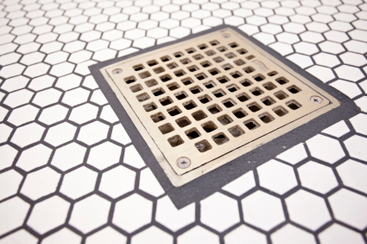|
|
| Correctional Facility: Floor Drains |
| By Klaus Reichardt |
| Published: 05/20/2013 |
 The Floor Drains Were Guilty?
The Floor Drains Were Guilty?
As many administrators may remember, 2003 was the first year we started hearing about severe acute respiratory syndrome, or SARS. The first officially reported case of a victim of SARS occurred in mid-February of that year when a 48-year-old Chinese businessman, traveling through Hong Kong, apparently contracted the disease. In a very short time, the business man died, as did the doctor who was treating him. In time, the disease spread to many other parts of Asia as well as other parts of the world. Even North America was impacted. The first recognized North American case of SARS occurred in Toronto, when a woman who had just returned from Hong Kong fell ill to the virus on February 23, 2003. Somewhat unbelievably, 257 people living in the greater Toronto area also came down with the disease, and public health officials suspect the transmission may have started with this first victim. This is because many of the SARS victims were patients, visitors, and healthcare workers in Toronto-area hospitals, which, due to lack of information, awareness, or neglect, simply had not adopted measures to stop the transmission. Altogether, it is estimated that about 8,000 people were stricken with the disease during this outbreak and about 775 died from it. At first it was not clear how SARS was being spread. Very often diseases are transferred by cross-contamination--the virus is living on something or someone and then transfers to something or someone else. Public health officials initially believed this was how SARS was spreading. However, in time researchers discovered that one of the main ways SARS spread was through airborne transmission. SARS and the Amoy Gardens Apartments In September 2003, the World Health Organization published some of the first studies on SARS and found that SARS likely started in China, and one way it was spread in Hong Kong was through that city’s Amoy Gardens apartment building. An upscale high-rise complex, many apartments in this building and other Hong Kong apartment buildings have floor drains located in their kitchens and bathrooms. Researchers discovered that fecal droplets containing the SARS virus were present in the building's drainage system, but they weren’t sure how the virus was getting into the apartments. While looking for a connection, the researchers discovered that many of the floor drains did not have a water trap seal. A water trap seal is created when water builds up in the U-shaped or J-shaped pipe under the drain. The reason this U- or J-shaped pipe is installed in most drains around the industrialized world is to prevent sewer odors from being released into the interior air, and it also prevent insects from entering the facility. In the case of the Amoy Garden apartments, the drains had dried out, which is not uncommon, and the fecal droplets containing the virus drifted up the pipes and became airborne, soon circulating into many of the apartments and the common areas of the building, causing the illness to spread. The Correctional Facility Connection A close look at many correctional facilities will find that floor drains are often present throughout the complex. They are commonly located in shower and restroom areas. Because water from showering or mopping and cleaning floors is common, water and moisture frequently flow down floor drains, keeping these water traps filled with water. Thus no odors or airborne contaminants can be released. However, floor drains are also found in scores of other areas of a correctional facility such as mechanical and HVAC rooms that may not receive as much moisture. As a result, floor drains can dry out, and odors can and often are released. And should disease-causing contaminants, bacteria, or viruses exist in the sewer pipes, there is potential that they can become airborne and cause disease, just as happened at the Armoy Gardens apartments a decade ago. However, there are relatively easy and inexpensive ways to prevent this from occurring. One way is to pour a small amount of a liquid trap sealer, sometimes known as a liquid primer or “ever prime,” in the drains, which can keep the trap sealed for months, possibly years. Schools often use these liquid trap sealers to help prevent drain pipes from drying out over the summer months when their buildings are mostly vacant, so that odors don’t fill the facility when school reopens. While no one can say with certainty, it is possible that the SARS epidemic could have been minimized if health officials had realized sooner that SARS was spread through the air and that a simple plumbing fix could have helped stop the transmission. This experience, while unfortunate, has taught us the importance of water trap seals not only to keep odors out of buildings but also to prevent the spread of disease and maintain the health of building inhabitants and visitors. Correctional administrators should make sure that the water traps in floor drains are filled at all times, and in those areas that do not receive much moisture--where there is a possibility if not likelihood that the floor drains will dry out--there are simple and inexpensive ways, such as mentioned earlier, to remedy this problem. A frequent speaker and author on water conservation issues, Klaus Reichardt is founder and CEO of Waterless Co. Inc, Vista, CA, makers of waterless urinals and other restroom products. He founded the company in 1991 with the goal to establish a new market segment in the plumbing fixture industry with water conservation in mind. He may be reached at Klaus@waterless.com |
MARKETPLACE search vendors | advanced search

IN CASE YOU MISSED IT
|


Comments:
No comments have been posted for this article.
Login to let us know what you think